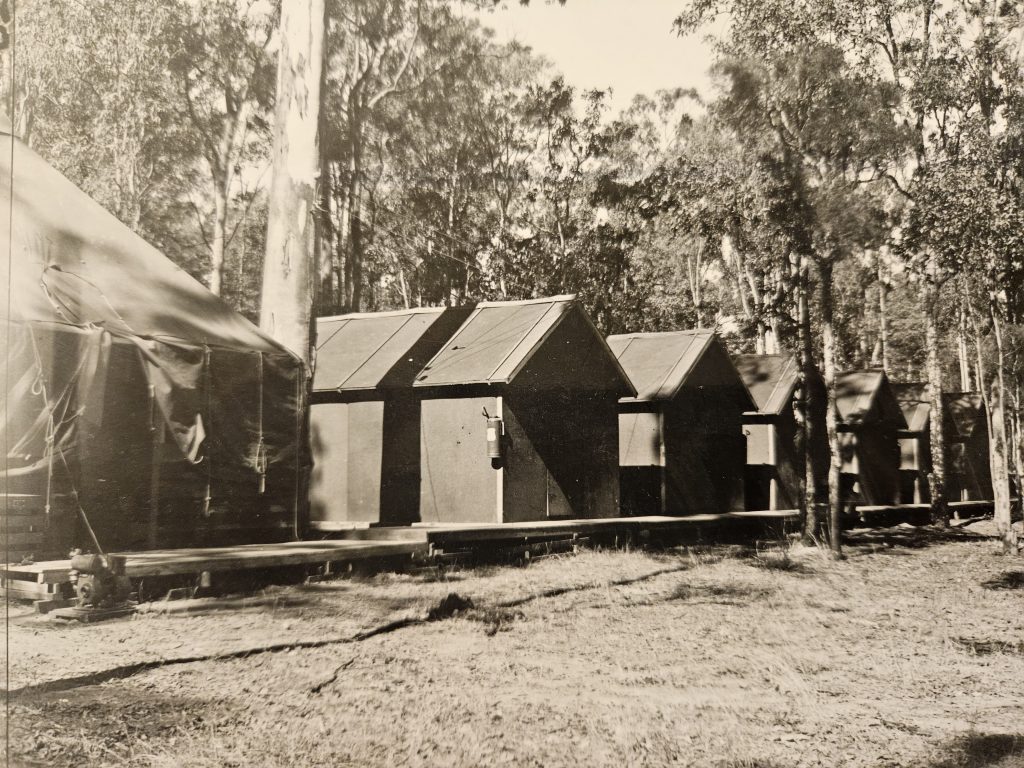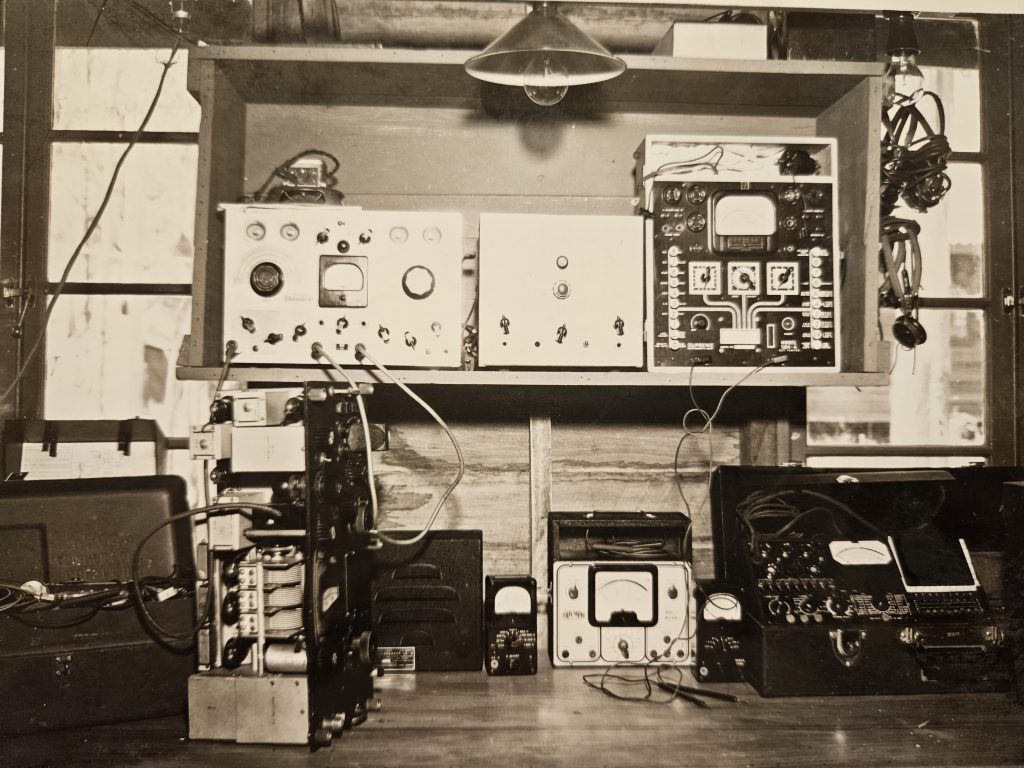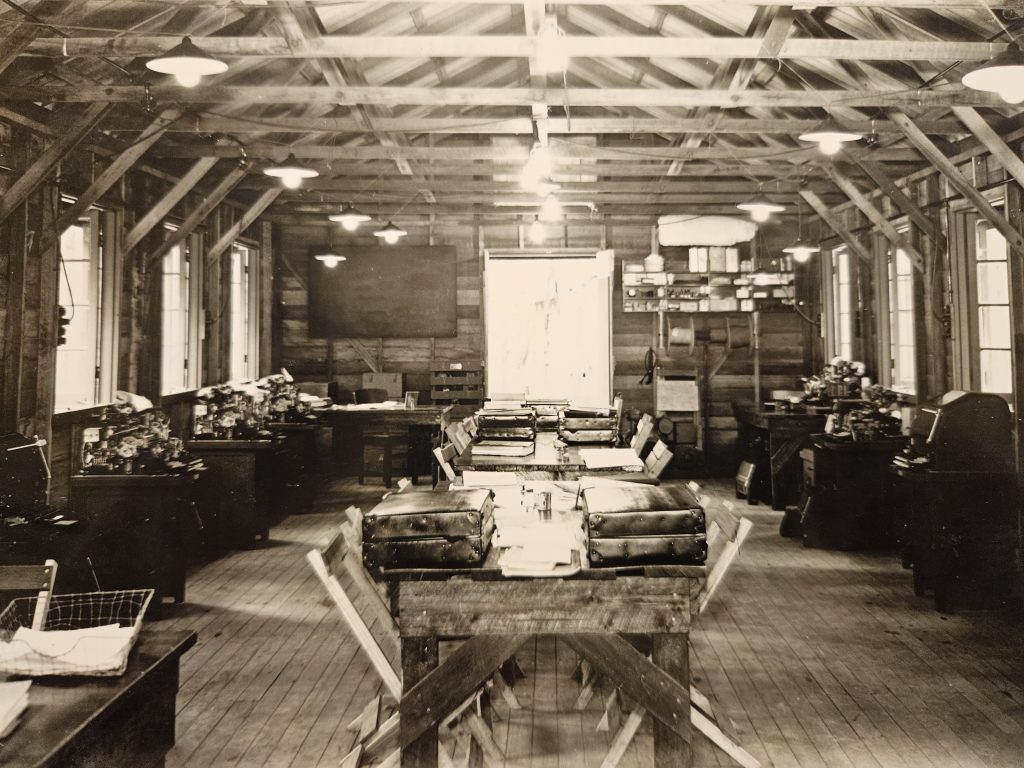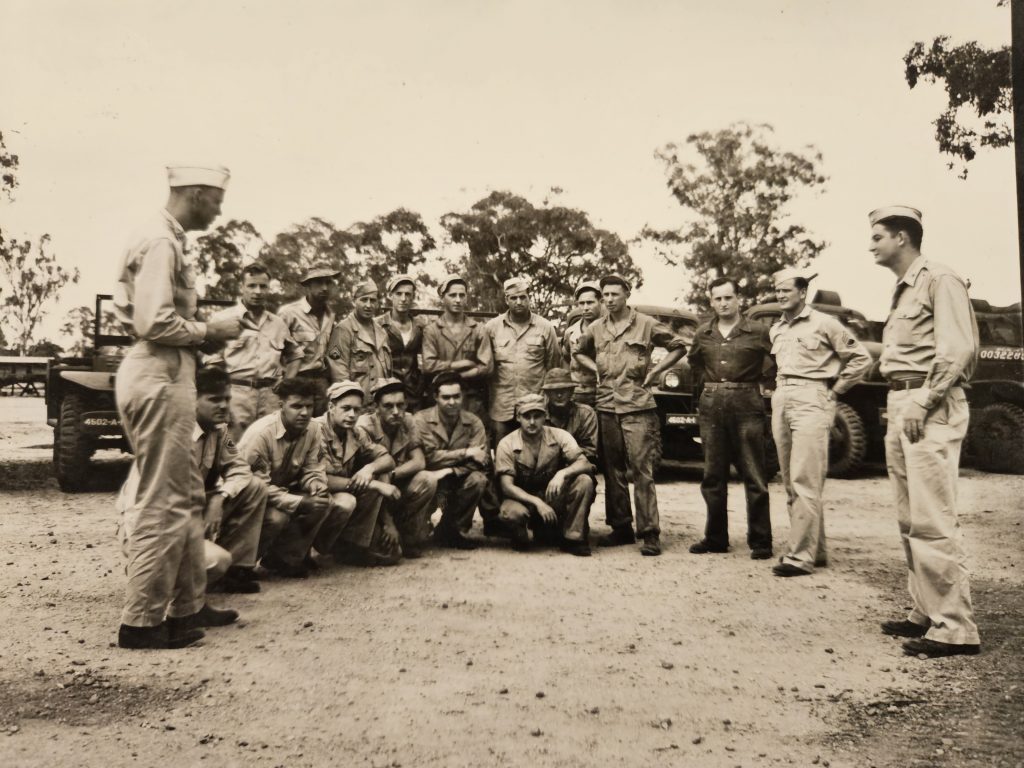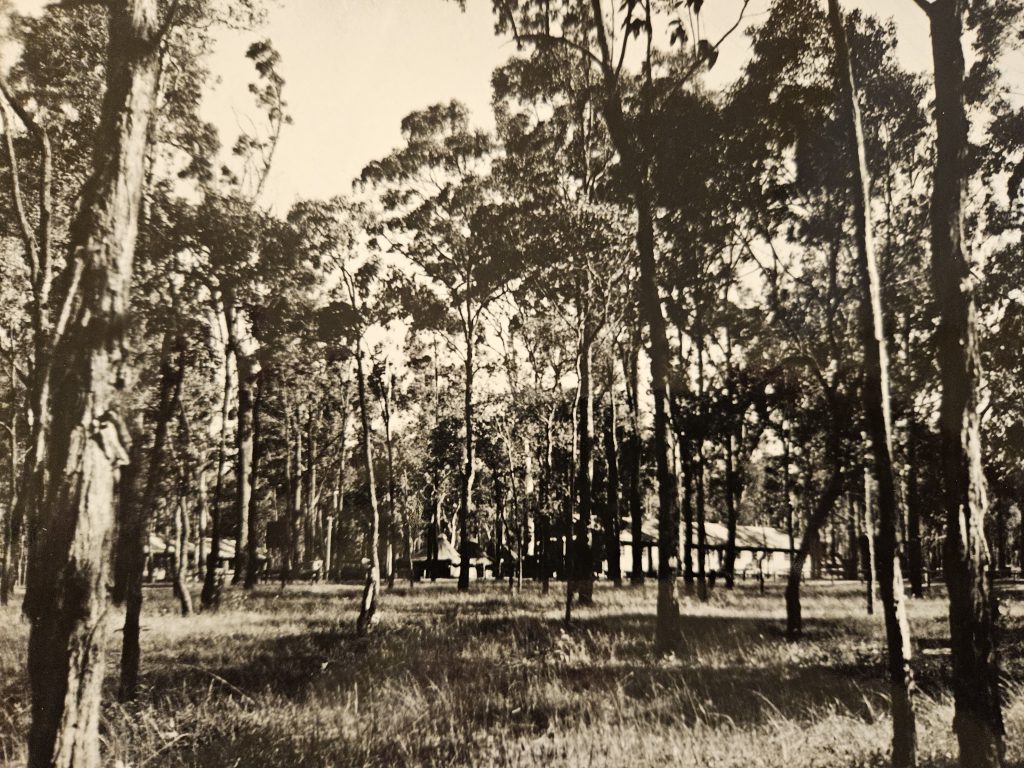Americans enter the war in the South-West Pacific

After the disastrous bombing of Pearl Harbor on 7 December 1941, the US became involved in WWII. The day after the bombing the Japanese invaded the Philippines. General Douglas MacArthur was recalled from retirement by the U.S. War Department and send to the Philippines to lead the war effort against the Japanse. However the Japanese advance was such that they rapidly conquered the Philippines, The thought they had already defeated the Philippines and brought their Netherlands East Indies (NEI) Campaign forwards by a month and started to invade Borneo on December 16. At the same time the Americas decided to move the few remaining B-17s (Flying Fortresses) to Australia. For the next two month they largely operated from the Dutch East Indies. See also: The Japanese threat to Australia
In January 1942 the American British Dutch Australian Command (ABDACOM) was formed. Singapore fell in 10 days, the Philippines was in fact declared lost and the invasion of NEI progressed also rapidly. As a result ABDACOM collapsed and its British Commander fled to Ceylon. Without Allied support the Dutch were unable to defend NEI and on 8 March 1942 the Dutch surrendered.
With a rapidly losing war President Roosevelt ordered MacArthur te retreat to Australia, basically to regroup and develop a new strategy to fight the Japanese. MacArthur’s escape from the Philippines is commonly referred to as the “Great Escape.” He and his family, along with a group of American and Filipino military personnel, were evacuated by PT boat to Mindanao and then flown to Australia. The following month President Roosevelt announced the formation of South West Pacific Area (SWPA). MacArthur was appointed Supreme Commander of the Southwest Pacific Area and began planning the Allied counteroffensive in the Pacific.
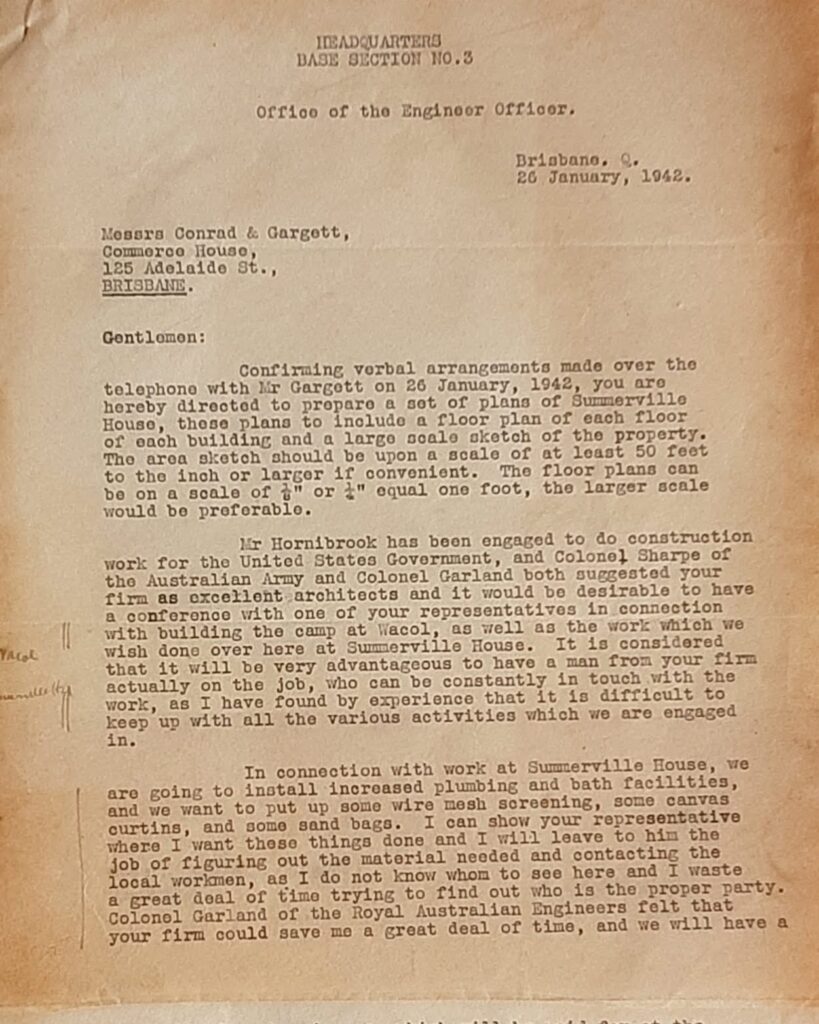
MacArthur flew to Batchelor Airfield in the Northern Territory and from there travelled by train to Melbourne.. But during a stop in Terowie, South Australia he delivered his famous “I will returned” speech on March 20, 1942, in which he declared his intention to liberate the Philippines from Japanese occupation. This would later on have far reaching consequences for NEI, as during the campaign – against the orders of President Roosevelt – he bypassed NEI and instead moved his troops to the Philippines.
But first, in March 1942, he set up his office in Melbourne. However, in order to be closer to the theatre of war he set up his Pacific HQ in Brisbane, where he arrived from Sydney on 23 July. His family had arrived here the day before. His personal office was in town, now the MacArthur Building in Queens Street and a staging camp was established, headquartered in the outer Brisbane suburb of Wacol.
US service men arrived in Brisbane from where they were send to the various battlefields in the Pacific. Their transfer camp – set up by US Army Service of Supply (USASOS) – was in Victoria Park on the edge of the central business district. During the war close to one million American soldiers passed through the Brisbane camps.
What caused the War in the Pacific.
Staging Camp in Wacol
A large area in and around Wacol – which was nearly all bush land at that time – was selected as its major staging camp for the US Army in the South West Pacific. Here weapons, ammunition and equipment in transit were assembled or processed. A range of military facilities were build in the area which were all managed from the headquarters at Camp Columbia.
Part of what became Camp Columbia – close to Brisbane River – was already since 1940 used by the units from the nearby Redbank Camp of the Australian Army for Bren Gun manoeuvres.
The closest civil (farming) communities to Camp Columbia where Darra, Richlands and Inala. Many people were able to profit from the enormous influx of Americans into their area. They opened fresh produce stall and shops to cater for these new customers, there was a high demand for produce, and the Americans paid well.
Many women were involved in washing for the army (some offered more private services) or simply fell in love with the visiting soldiers. There are plenty of stories about local girls in Brisbane’s South West to have born children from the soldiers, including black ones. Several also married their soldier lovers, traveled to the USA and often afters years came back with or without their husbands. In all 16,000 of the one million American war brides came from Australia and 7,000 of them from Queensland.
Camp Columbia
The site selected for Camp Columbia was close to (the old) Ipswich Road and the Wacol railway station. It had three sections:
- Camp 1, west of Sandy Creek, north of Grindle Rd towards Wolston Creek
- Camp 2 , east of Sandy Creek, between the railway and Ipswich Road
- Camp 3, between Sandy Creek and Bullock Head Creek, south of Ipswich Road.
The site was selected because it had large government reserves and was close to the Wacol railway station. The aging and poorly maintained railways system became the major transport corridor to the northern parts of Australia for the supply of bombs to the various airports that were set up by the American forces. Often thousands of bombs were stored in the railway yard waiting to be transported north.
Australian Builder and Civil Engineer.Manuel Hornibrook was selected by the Americans to build many of the buildings required by the military. The camp would have to be able to house 5,000 staff. He brought together over 50 local Brisbane builders for the construction. He designed the camp in such a way that it could be used after the war for shearers’ quarters on station properties. In the end it were refugees and migrants who benefited from his foresight. The Hornibrook company also constructed the Story Bridge and the Hornibrook Highway (Bridge). For the headquarters seven two-story buildings were constructed using timber with asbestos cement (fibrolite) cladding.
The top of a hill along Wacol Station Road was earmarked for the Camp’s headquarters. This comprised administrative offices, barracks, accommodation huts and an internal road network.
Australian Builder and Civil Engineer.Manuel Hornibrook was selected by the Americans to build many of the buildings required by the military. The camp would have to be able to house 5,000 staff. He brought together over 50 local Brisbane builders for the construction. He designed the camp in such a way that it could be used after the war for shearers’ quarters on station properties. In the end it were refugees and migrants who benefited from his foresight. The Hornibrook company also constructed the Story Bridge and the Hornibrook Highway (Bridge). The headquarter buildings were constructed using timber with asbestos cement (fibrolite) cladding.
The top of a hill along Wacol Station Road was earmarked for the Camp’s headquarters. This comprised administrative offices, barracks, accommodation huts and an internal road network.
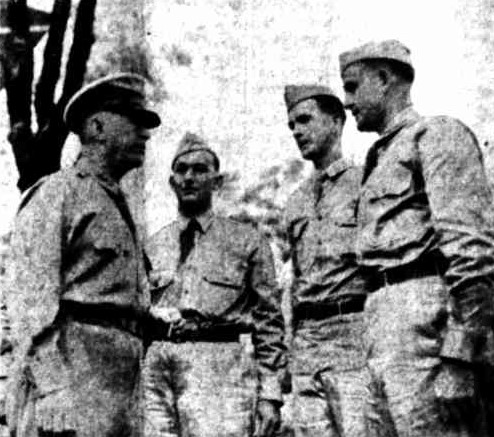
US Sixth Army, speaking to graduates of the Officers’ Candidate
School after their graduation ceremony at Camp Columbia,
Somewhere in Australia. Left to right: General Krueger,
Second Lieuts Jerome Friedman, Bronx, NY: Donald Henry, of Seymour, Md: and Woodrew Harrison of Clalborn, M.d.
Photo by US Army Signal Corps. The Newcastle Sun, Wednesday 14 April 1943.
The first unit stationed at Camp Columbia was the 738th Military Police Battalion, they arrived here on the 9th of August 1942. In Brisbane this division received notoriety during the Battle of Brisbane (26 November 1942) between (overpaid, overdressed and oversexed) US soldiers and their Australian counterparts.
In April 1943 Camp Columbia also became the headquarters of the Sixth United States Army. This is the theater army of the United States Army and was formed in Australia at Camp Columbia. It was activated in January 1943, commanded by Lieutenant General Walter Krueger. Under the code name Alamo Force, it assumed control of the majority of US Army units involved in Operation Cartwheel, the campaign to isolate and neutralise the Japanese base at Rabaul in New Britain. Following the completion of Cartwheel, Sixth Army joined Australian Army and other US forces on the north coast of New Guinea. Similar in conception to the island hopping operations of the central Pacific, the object of the attacks was to land, establish a garrison and airfield which could support the next strike, and then move on.
At Camp Columbia they had their offices and living quarters on the north-eastern side of the land. The US army stayed here till 1944, after which the Dutch took over the Camp. See overview of WWII Maps and Aerial photographs.

Document from the US National Archives. US Army Signal Corps Photographic Note re. Visit to Camp Columbia by US Under-Secretary of War Robert Patterson, 1943, See: https://catalog.archives.gov/id/14412
There was no infrastructure in Wacol but within weeks canvas water pipes were connected to the water supply in Darra; electricity infrastructure was also built, again linked to the facilities in Darra. Over the following months significant extra infrastructure was developed. The main roads used by the military from Wacol to the railway station and the airfield were sealed. A large sewerage system was built on the western side of Wacol. People in Brisbane complained that the military and later the refugees and migrants that used the camp had a better sewerage system than people in town. See remnants of sewerage system and other constructions.
The State Library of Queensland hold a file from the “MacArthur Era Trust Photographs and Records”. These were marker Camp Columbia or Staging Camp, unfortunately no further details were provided.
